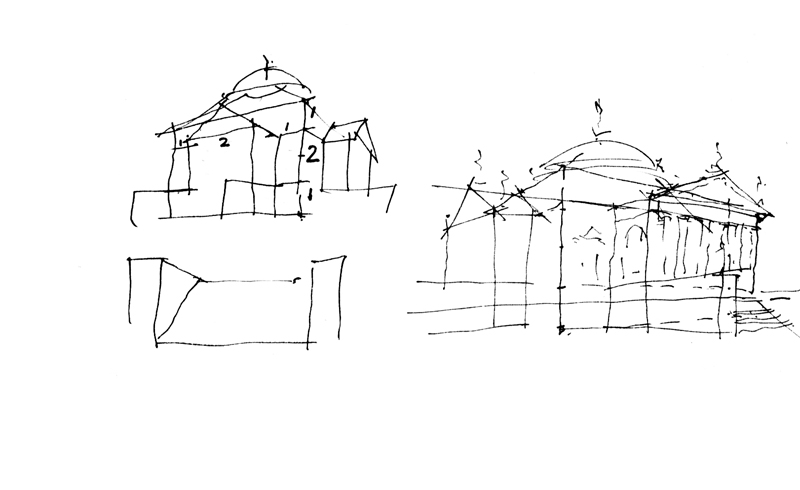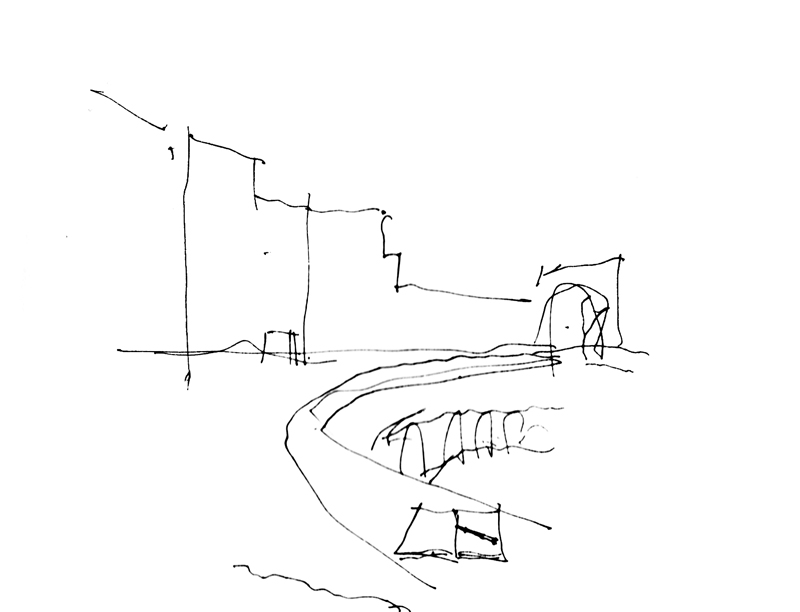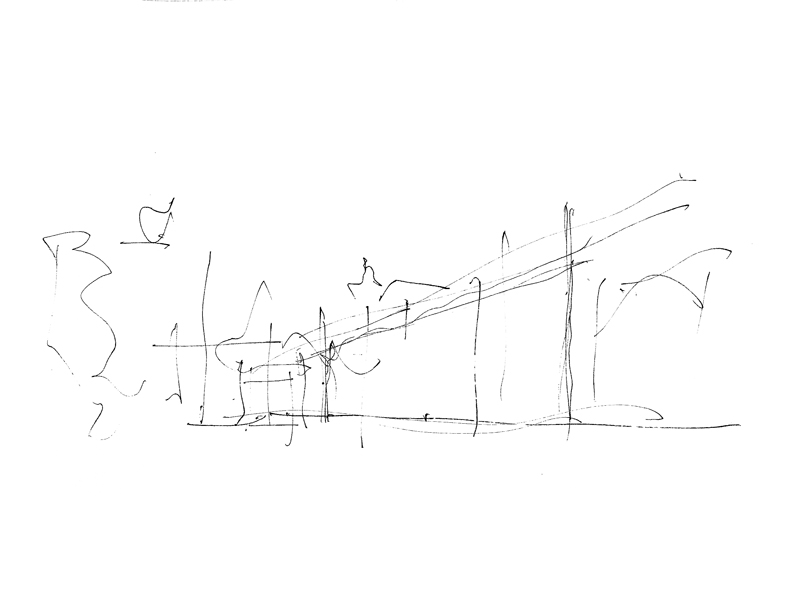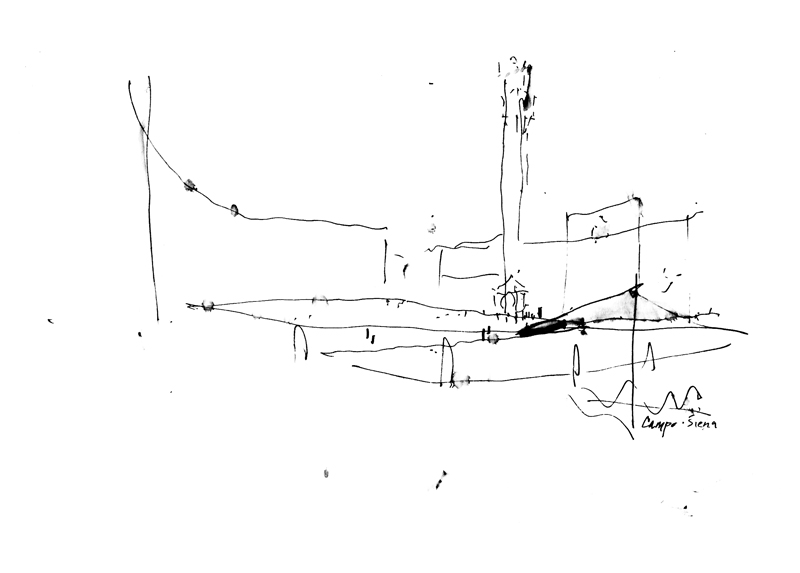When an architect, designer, or builder says that a building has “good bones,” this generally means that it is well built. Like others, however, I would extend the meaning of the phrase to include not just the sturdiness of a construction but also the soundness of its underlying organization and layout. A design with good bones should be able to endure flaws in workmanship or execution and gracefully accept the changes made to improve it.
So it is also with a sketch. To begin a drawing done on location, we must first select an advantageous viewpoint that conveys a sense of place and frame the composition to fit on the page. Then, a crucial step is establishing the “bones” of the drawing—its basic structure—with the first lines we draw. I like to say that the number of lines is five but this, of course, is arbitrary. For some views only a few lines may be necessary while for others, more might be required to establish the structure of a drawing.
It is essential to understand that once this structure is established, changes can still be made to calibrate scale, improve proportional relationships, and adjust the positioning of elements. Drawing these first few lines is simply a way to block out the essential relationships on a page quickly, before expending too much time on a drawing only to find out that a portion might be misplaced or is out of proportion to the rest of the composition.
Here is an example—a very quick outline of a view of the Campo in Siena that I did as a demonstration. With more time and better weather, I might have finished it but I think it is possible to see and visualize the space even in this incomplete state.




